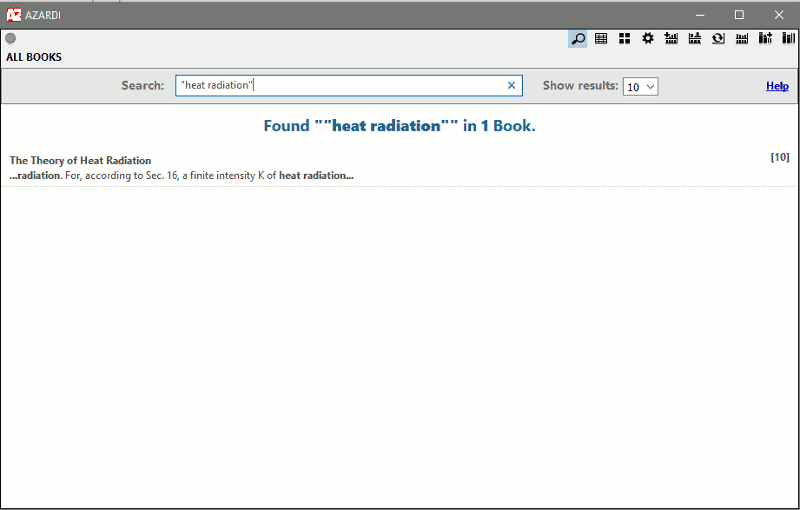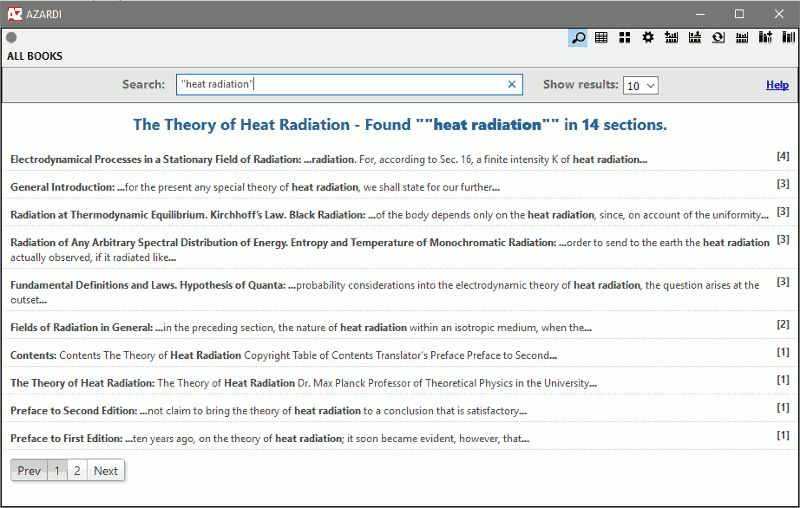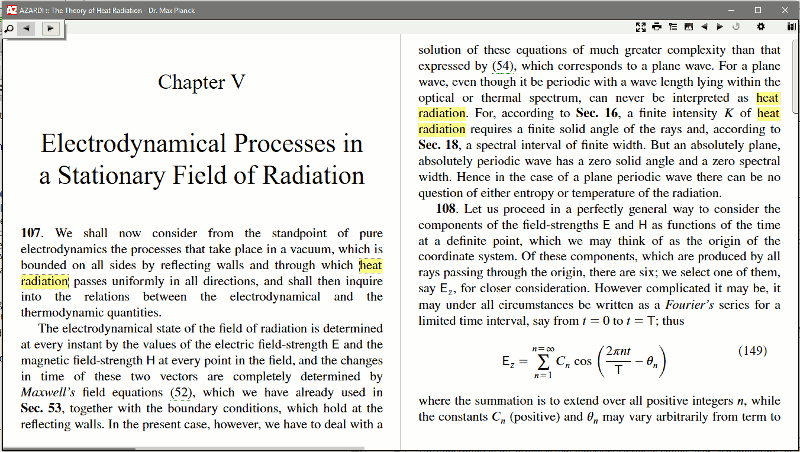Publishing Business Tools
A short while ago Joe Wikert posted an article on Digital Book World, The Lost Art of Indexes in eBooks. The article discusses search and indexes in ebooks, and whether search is a substitute for indexes. For me the high point was:
Two subjects are raised in this article as sort-of overlapping items:
- Indexes
- Search (or more correctly find) in e-books
The Need For Digital Content Indexes
The implication of the article is that publishers assume ebook "find" is a substitute for high quality indexes. This may be a "some publishers" and "most reading systems" approach where the index is a bolt-on and not treated as a core information access/exploration tool. There even are some publishers that do just delete it from their books as "unnecessary".
However many publishers we work with are passionate about quality index creation for their print books and complete index linking in their ebook and other digital format editions. Generally with backlist books it is only possible to link to page references in the digital text and it is one direction linking. But this is better than nothing at all.
For front list books the "real" Index feature in ebooks is very much alive. IGP:Digital Publisher produces print and interactive digital indexes and has done since 2013. Not to forget that AZARDI ePub2/3 reading systems displays them in new digital content ways.
Rather than being "lost art", interactive ebook indexes are just ignored by most where the focus is on trade books and "print-under-glass". To make this worse the "technically deep" (read weird) IDPF Index epub:type attribute specification probably killed interactive indexes. (We wrote about that in the dark digital content past here.)
Two Digital Content Challenges With Indexes
There are two challenges with indexes for digital books are creating them and presenting them. The indexes created need to work in all other formats as well, such as print and online presentation.
Creating Indexes
The biggest challenge with indexes is they are page referenced in print books (as with backlist books). A reflowable ebook index ideally has references to the exact reference content in digital content packages that is turned to pages in the print format.
That is why we created the IGP:eIndexer module for IGP:Digital Publisher. This allows sophisticated indexes to be easily created while front list content is being edited or even authored. It can also be done after production is complete as with the traditional process. The outcome is instantly generated print PDFs plus ebook and static site indexes with links to the content. Print book indexes are of course referenced to the page on which the index reference occurs.
Dynamic Index Interactivity
Due to the way indexes are tagged in IGP:Digital Publisher during ePub/digital format creation they can be processed at packaging time for interactivity. Then simple Javascript can be used to present multiple index lists in the content context. This approach works in any reading system that supports Javascript. Rather than a long-wided explanation, experience horizontal index interactivity here by clicking on the highlighted text.
Main with page numbers. This is suitable for documents that have pagebreaks included and a source reference to the print work the pagebreaks represent. Worst case the links go to the pagebreak reference. Ideally the links resolve to the actual index reference point on that page. The processor removes the page number for the current index reference. If the reading system has a good back button, the user can visit as many of the index references as they like.
community groups, 23, 27-28. See also Mentors
Sub-terms
building relationships with, 31-33
cost of participation in, 33, 53, 57
finding, 28
first contact with, 29, 30-31
first meeting, 57-58
informal rules at, 53, 55, 78, 89-91
key leaders and stakeholders in, 31
leaving, 108
location, 33
long-term participation in, 97
mapping a new routine for, 70-72
suitability of, 30-36, 52-55
timing of, 33
Main with direction indicators. Suitable where no pagebreak references are available and the index reference is tagged in the content. This is and index presentation option built into the IGP:Digital Publisher eIndexer for the production of front-list print and digital only books. Notice that the arrows of single references point to whether the index reference is before or after the current location. This sense of direction is essential in horizontal navigation tools. Unfortunately this approach does not give a sense of "distance".
community groups, 23, ▶-◀. See also Mentors
Sub-terms
building relationships with, ▶-◀
cost of participation in, ▶,▶, ▶
finding, ◀
first contact with, ▶,▶-◀
first meeting, ▶-◀
informal rules at, ▶, ▶,▶,▶-◀
key leaders and stakeholders in, ▶
leaving, ▶
location, ▶
long-term participation in, ▶
mapping a new routine for, ▶-◀
suitability of, ▶-◀, ▶-◀
timing of,
▶
with page numbers. "first contact with" has been moved to the top, but the associated index terms are also available. Suitable for documents that have pagebreaks included and a source reference to the print work the pagebreaks represent. The abstraction with page numbers in digital content is that the user could have clicked the Page 12 reference, the page 47 start index-term reference or the page 52 end index-term reference.
with direction indicators. Suitable where no pagebreak references are available and the index reference is tagged in the content. This is built into the IGP:Digital Publisher eIndexer for the production of front-list print and digital only books. The sub-term is listed first with the primary term second, and other links referenced appropriately.
The value of this approach is a user can explore all index references and sub-references for any specific index term and easily return to their starting reading point from any of the other index popups. The article talks about bringing the content to the reader rather than navigating to the content, but that is impractical given that many index references are many pages and encompass concepts rather than matching text.
While a reading system theoretically could assemble this package dynamically:
- It doesn't make sense to commit tablets to the memory and CPU resource required.
- You would never in 1000 years get multiple reading systems to handle this consistently across all platforms.
Find vs Search vs Indexed Search
ADE has the decency to call their feature "find" rather than search, but the article laments ebook reader "search" capabilities. The target user base of AZARDI is education and academic content. We implemented full text indexed search across all books a few years ago. This has boolean search tools include AND, OR, NOT, Phrase, NEAR and *Wildcard. This is especially useful for academic and tertiary research where content in available in digital form.
AZARDI Desktop Readers got full text indexed search in 2014. This was created specifically for users who engage with large academic and education content collections.
AZARDI allows users to index or de-index collections of books at will which makes it easy to work with when there are a number of different subject collections (a collections indexing strategy is under consideration).
In Summary
Interactive indexes and full text search is a very living and available "art" and is available in AZARDI ePub readers and other reading systems that support Javascript. You can download AZARDI for Linux, Mac or Windows here.
iBooks and Kindle have moderately useful text string search features on an open book basis, but these are inadequate for complex searches. AZARDI has full text indexed search that can be customized at any time.
Creating indexes for print and digital formats is supported by IGP:Digital Publisher. We don't know of any other similar tools that produce the same result: multi-format indexes.
The focus of much discussion on ePub production and reading has been "print under glass". There was one attempt by the IDPF to create an index attribute specification. This was backward looking to the LaTeX / DITA XML index approach rather than forward looking for new digital content experiences and the new requirements of index interactivity. It failed.
If you need to sell your books through major eRetailers (Apple, Amazon) you are probably not going to be able to have interactive eIndexes in the near future. If you distribute your content directly to your consumers via PDF, ePub3 with AZARDI and/or static sites your content can deliver new and outstanding exploration and discovery features.
Posted by Richard Pipe
Related Links
IGP:Digital Publisher information
AZARDI:Content Fulfilment information
Free AZARDI Desktop Reading systems
Power XHTML e-Indexing (21 April 2013)
IDPF Index Spec Deconstructed (1April 2013)
Static sites for Publisher Content (19 Jan 2016)


